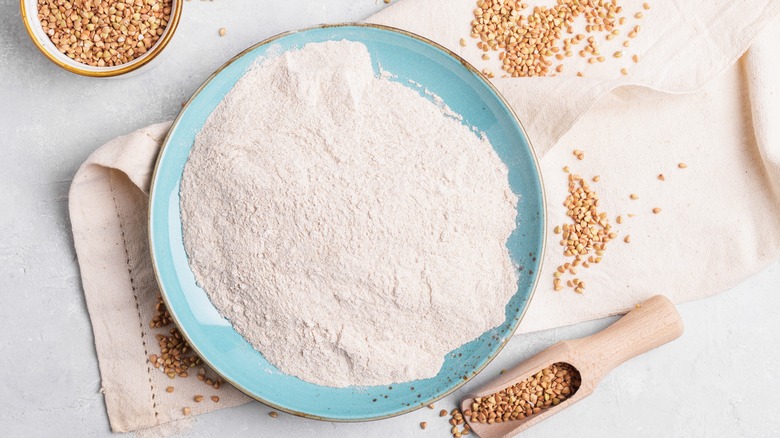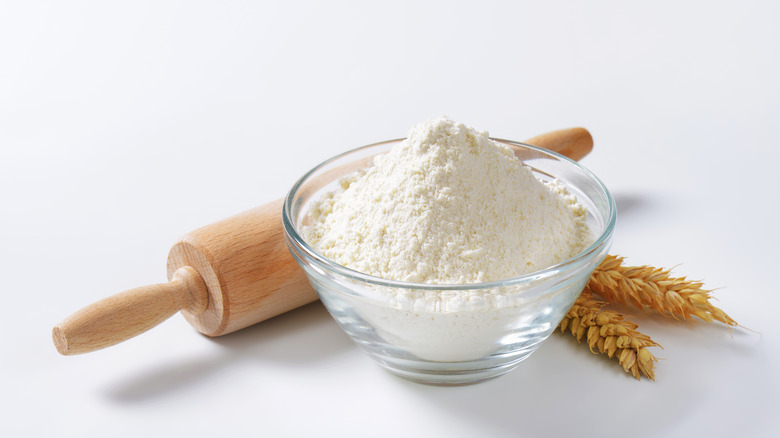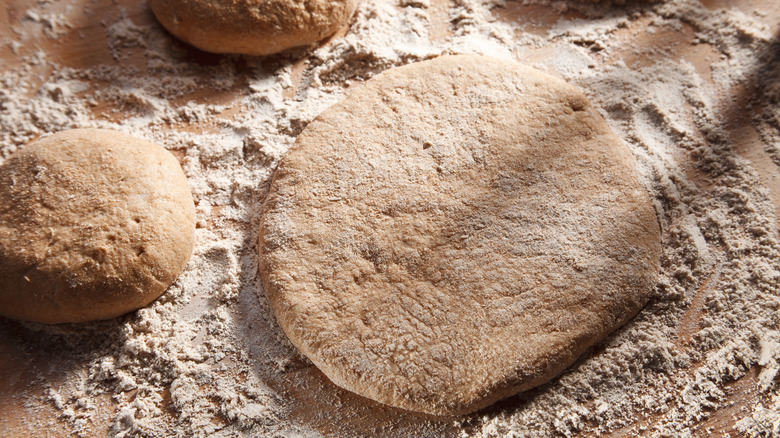The Real Difference Between Bleached And Unbleached Flour
When it comes to baking, nothing is more important than flour. What kind of flour you use, how much, how hard or soft it is, how much protein it has, and how it is processed are all things that will affect the look, crumb, and tastes of your baked goods. We didn't always have the access to all the different options we have today, but humanity has been making flour for centuries. Daisy Flour says that there is evidence in the Upper Paleolithic region in Europe that we've been producing flour for at least the last 30,000 years. Egyptians, Romans, Greeks, and earlier civilizations all found ways to make flour by either grinding it with a mortar and pestle or more advanced techniques like watermills.
These days, it is more common to use steel rollers to grind our grains into useful and relatively cheap flour. And now that all kinds of flour are accessible at local and national grocery stores, we can experiment more with recipes than our ancestors got the chance to. The problem becomes that there are so many different kinds of flours made in so many different ways that new bakers can have trouble spotting the disparity between them.
One thing many people wonder is if there is a real difference between bleached and unbleached flour, and if they should use one over the other with certain recipes.
Bleached Flour
Most of us probably have bleached flour stored in our cupboards at home. Bleached flour is made by refining wheat (aka removing the bran and germ from the kernel and leaving only the endosperm), milling it into the powder form we are familiar with, and then finally treated with chemicals (via Healthline). These chemicals are often things like benzoyl peroxide and chlorine. By treating flour with these chemicals, the texture becomes finer and the color loses any natural yellowness and becomes ultra-white. Bleached flour is believed to rise faster in baked goods and retain its color better and maintain a sharper color in baked goods. Science Meets Food also claims that bleaching flour oxidizes the proteins in the grain and creates strong gluten strands.
The effects of bleaching flour sound beneficial. But honestly, the effects on most of your baked goods like cookies and loaves of bread won't be too severe if you choose to use bleached flour vs unbleached. Better Homes & Gardens explains that, in short, you can interchange bleached and unbleached flour in most of your baking but should be sure to follow recipe-specific instructions if they claim that one flour works better over another.
Unbleached flour
As for unbleached flour, how the product is made is in reality, fairly similar to bleached flour. According to Live Strong, both flours, if all-purpose in nature, are ground from soft red winter wheat, hard red winter wheat, or both. They both have the bran and germ removed during the refining process and have B vitamins and iron added. But from that point on, how unbleached and bleached flours are made deviate. Unbleached flour is naturally harder and has more protein content than bleached, which means your baked goods are going to have a little more gluten, be a touch chewier, and maintain an off-white color.
Kitchn says this is because unbleached flour is naturally aged instead of using chemicals to artificially brighten and soften up the grain. It takes longer to produce and is therefore more expensive. The cooking site says that unbleached flour is great to use for yeast bread, cream puffs, eclairs, and pastries.


